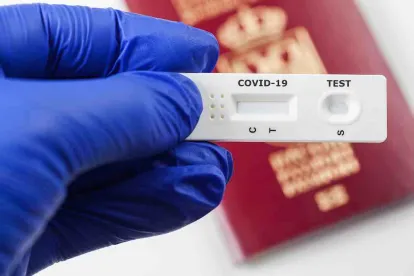Testing for COVID-19 certainly has evolved over the past 18 months or so. As supply and allocation continue to face challenges, guidance on serological/antibody versus viral testing, testing in the workplace, informed consent, among other things have emerged to help guide coronavirus testing in the workplace. President Biden’s Path out of the Pandemic (the “Path”) seeks to drive higher levels of COVID-19 vaccination, while allowing COVID-19 testing as an option under certain components of the Path. Testing as an option to vaccination is likely to create more demand for a product already in high demand, and organizations may need to think more carefully about how the President’s Path may change their current COVID programs. More at home testing may be what is needed to help get further down the Path.
A significant part of the Path for employers is the anticipated rule from the Department of Labor for employers with 100 or more employees. The Path explains:
The Department of Labor’s Occupational Safety and Health Administration (OSHA) is developing a rule that will require all employers with 100 or more employees to ensure their workforce is fully vaccinated or require any workers who remain unvaccinated to produce a negative test result on at least a weekly basis before coming to work. OSHA will issue an Emergency Temporary Standard (ETS) to implement this requirement. This requirement will impact over 80 million workers in private sector businesses with 100+ employees.
Employers’ struggle to get more of their workers vaccinated for COVID-19 continues. There are several reasons, more than can be identified and explained here. But some include the vaccine’s only having FDA Emergency Use Authorization (EUA) versus full FDA approval (although that is wearing away), required reasonable accommodations for disability and sincerely held religious beliefs, fears about complications from the vaccine, etc.
This has not stopped employers from rolling out a bevy of creative measures to drive vaccination levels higher – gift cards, paid time off, raffles, health plan premium surcharges, increase in paid holidays, and other perks for those who get the vaccination. Some of these efforts have helped. Delta Airlines recent announcement of a $200 health plan premium surcharge is reported to have moved 4,000 of its 20,000 unvaccinated employees to get the vaccination. Still, according to health experts, levels of vaccination are not where they should be and the Delta variant continues to spread.
It is likely, at least in the short run, that a significant segment of the population will remain unvaccinated, notwithstanding the President’s Path, DOL guidance, and employer incentives. So, as weekly testing is likely to become more common, employers will need to manage that cadence at a reasonable cost and with minimal administration, and at home testing may be the answer for a lot of organizations. As reported by the Washington Post:
Most take-home tests, including BinaxNOW and Quidel’s QuickVue test, are antigen tests that look for protein pieces of the virus. PCR tests detect the virus’s genetic material.
Home tests are less sensitive than PCR tests and tend to be better at turning up positive results in people who are symptomatic than those without obvious signs of illness. But they offer some key advantages. Results usually show up in 10 to 15 minutes. And they can be administered at the point of care — nursing homes, clinics, schools, private residences. Most PCR tests are administered at testing sites and need to be sent to labs, meaning turnaround time is almost always 48 hours or more.
There are still lots of issues that need to be considered, not the least of which are the anticipated guidance from the DOL/OSHA and cost. On the issue of cost, one question has been whether at home or other point-of-care tests have to be covered under a group health plan. CMS guidance from earlier this year provides some insight:
Q4. Do point-of-care tests for COVID-19 have to be covered without cost sharing under the FFCRA?
Yes. The FFCRA and the CARES Act make no distinction between point-of-care and other tests; all COVID-19 diagnostic tests that meet one of the criteria outlined in section 6001 of the FFCRA, as amended by section 3201 of the CARES Act, must be covered without cost sharing, prior authorization, or medical management (including for asymptomatic individuals with no known or suspected exposure to COVID-19).
However, the same guidance clarifies “plans and issuers are not required to provide coverage of testing such as for public health surveillance or employment purposes. But there is also no prohibition or limitation on plans and issuers providing coverage for such tests.”
Nonetheless, as employers begin to ramp up to get on the President’s Path, at-home antigen testing for employees may be a significant part of their plans.




 />i
/>i

